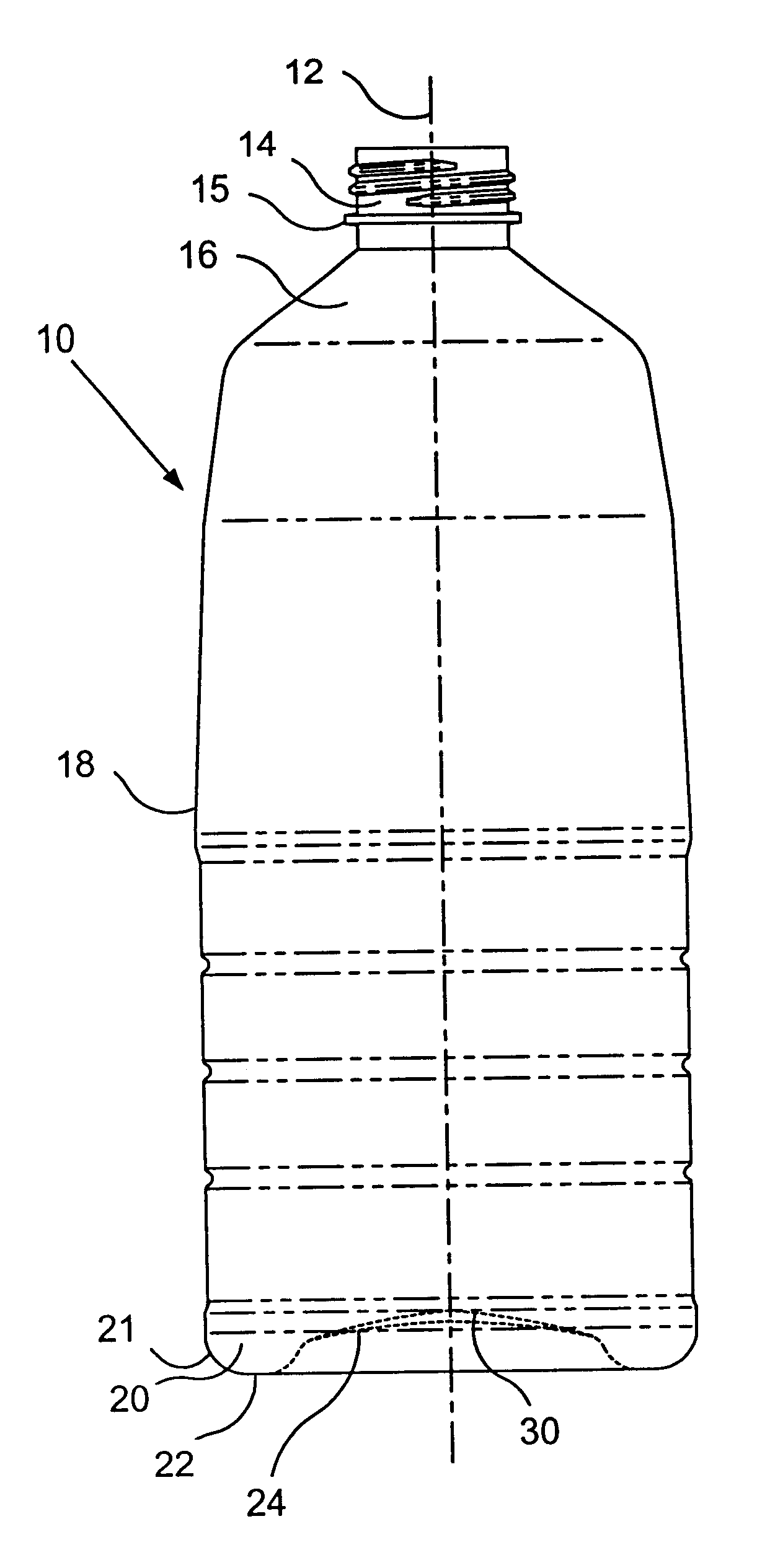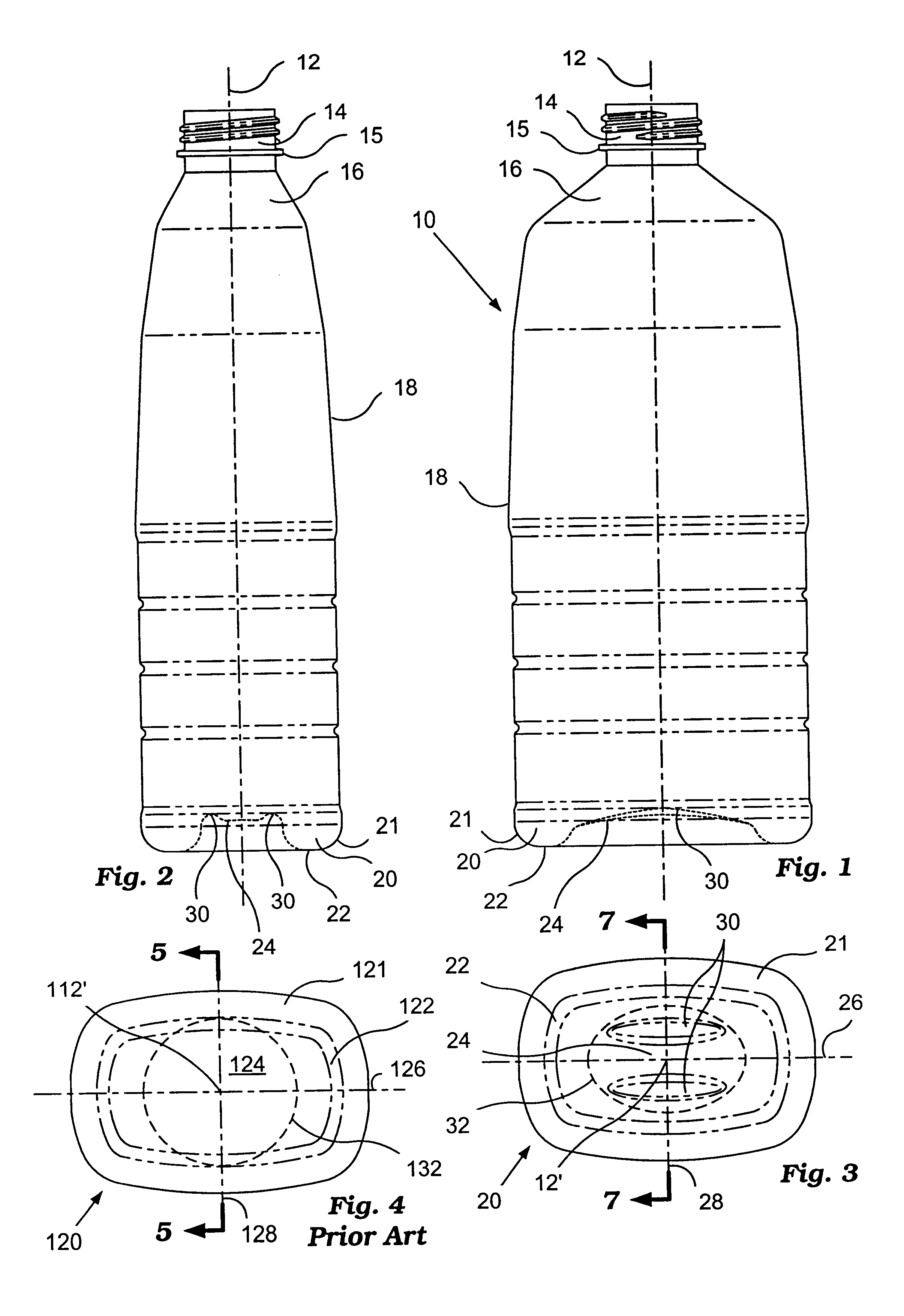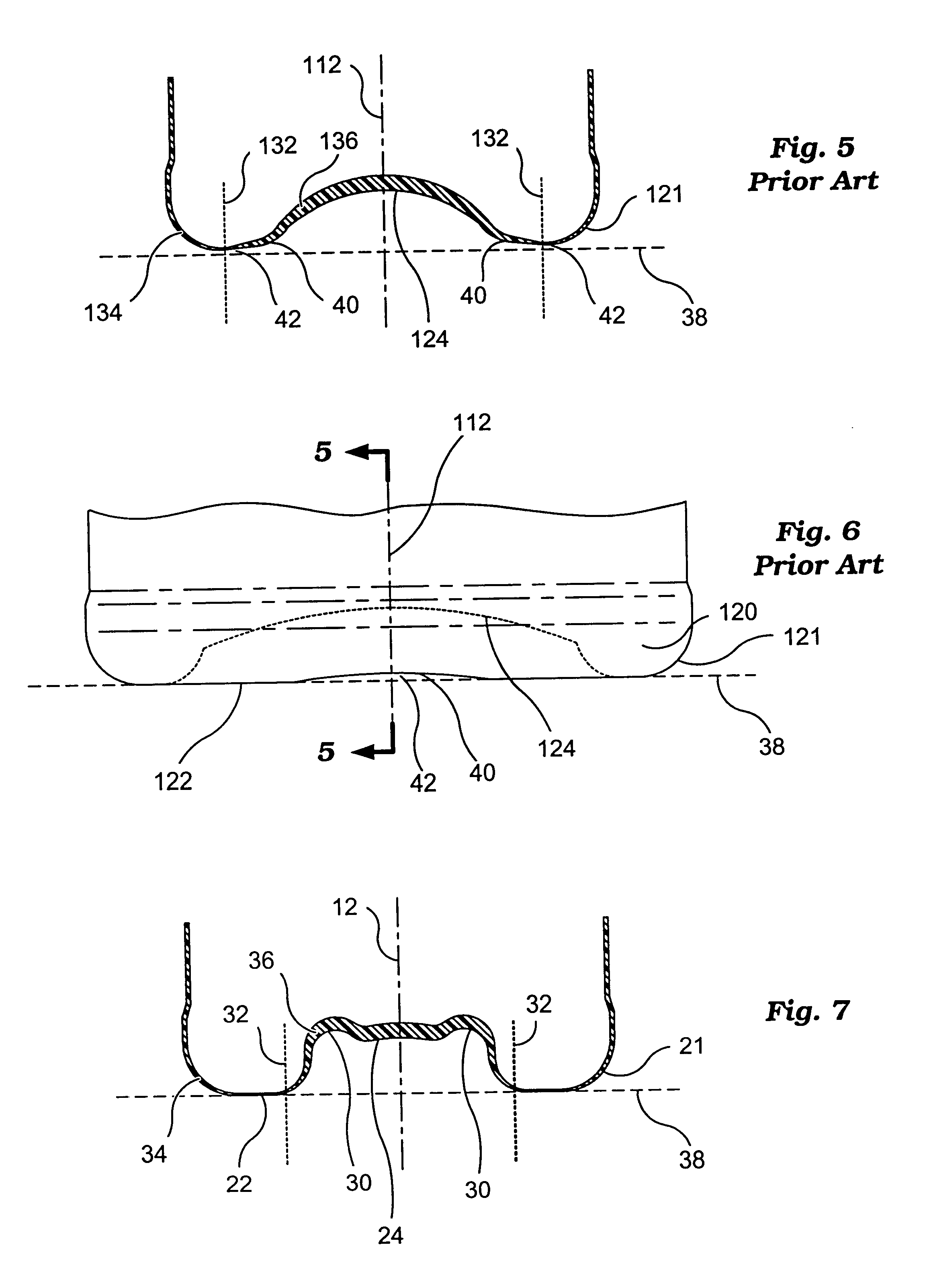Process for improving material thickness distribution within a molded bottle and bottle therefrom
a technology of molded bottles and bottles, which is applied in the direction of transportation and packaging, rigid containers, other domestic articles, etc., can solve the problems of difficult blow molding, uneven distribution of material thickness, and difficulty in blow molding
- Summary
- Abstract
- Description
- Claims
- Application Information
AI Technical Summary
Benefits of technology
Problems solved by technology
Method used
Image
Examples
Embodiment Construction
Referring now to the drawings, FIG. 1 and FIG. 2 illustrate a bottle 10 that is typical of this invention. Proper practice of the manufacturing process creates certain desirable readily identifiable characteristics in the molded bottle 10. The process and the bottle created by the process are specifically related. Understanding the process requires understanding bottle 10 attributes that result from the process.
Bottle 10 has a longitudinal axis 12, neck finish 14 surrounding an open-end, flange 15, shoulder 16, sidewall 18, and base or bottom 20. Neck finish 14, flange 15, shoulder 16, sidewall 18, and bottom 20 combine to define an outer surface shape to bottle 10.
Bottom 20 consists of a contact surface 22, which contacts a resting surface 38 (FIG. 7) when bottle 10 is standing in a normal upright fashion. Bottom 20 also consists of a chime 21 and a push-up 24 that merges with and generally rises above contact surface 22. The chime 21 is an outside curved portion or outer edge port...
PUM
| Property | Measurement | Unit |
|---|---|---|
| thickness distribution | aaaaa | aaaaa |
| pressure | aaaaa | aaaaa |
| shape | aaaaa | aaaaa |
Abstract
Description
Claims
Application Information
 Login to View More
Login to View More - R&D
- Intellectual Property
- Life Sciences
- Materials
- Tech Scout
- Unparalleled Data Quality
- Higher Quality Content
- 60% Fewer Hallucinations
Browse by: Latest US Patents, China's latest patents, Technical Efficacy Thesaurus, Application Domain, Technology Topic, Popular Technical Reports.
© 2025 PatSnap. All rights reserved.Legal|Privacy policy|Modern Slavery Act Transparency Statement|Sitemap|About US| Contact US: help@patsnap.com



